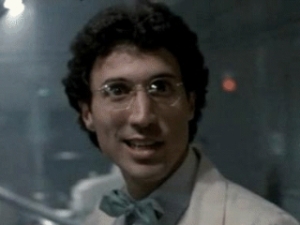Mastering the Circumstances: The Sci-Fi Rule
We’ve all seen the science fiction flick that just didn’t click, right? What was it exactly? Was it the writing, the acting, the direction? Well, there is one thing that frequently goes wrong in the acting and direction when a sci-fi film fails to engage the subconscious mind of the audience.
Once your character has learned that a vampire, werewolf, giant reptilian sea-monster, mega-virus, malicious ghost, zombie, alien creature or any other super-natural entity does indeed exist, then this informs every single moment from this point on in the film. It changes absolutely everything, in comedy or drama.
The way your character sits, the way he or she walks through the house, eats, drinks, goes to bed, wakes up, drives, looks, listens – every expectation is now changed for the remainder of the film. There cannot be a single moment when your character can or will forget that the world is now proven to contain this now imminent threat to your character and to his or her world.
This is especially important for directors to remember as you work through each scene! This is obviously very tricky when shooting out of sequence, which is always the rule. Tracking the performances for their emotional content, being certain that every moment contains the character’s awareness of the events unfolding in the world is essential to the audience remaining involved in the dramatic event.
Remember, the dramatic event occurs upon the subconscious mind of the viewer. The audience knows full well that they are in the theater, or sitting in their living room in front of the widescreen TV. Their conscious mind is always aware of this. Film does not principally engage the conscious mind – it principally engages the subconscious mind of the viewer. It is the subconscious mind that locks in to a film and forgets it’s watching a movie!
If in the science fiction film (or any film) the plausibility of the film is lost – at any point – then the audience slips out of the dramatic event and watches the film with the conscious mind for as long as it takes to get back into it. We don’t want that to happen. We want to lock the audience’s subconscious mind deeply into the film with a plausible scenario (writer), plausible action (director) and plausible behavior (actor).
Once we know the monster – what ever kind of monster it is – exists, then from then on it affects how we do everything, including how we lick our lips!
More at the BLOG at shawnnelsonacting.com
Please Like and Follow the BLOG, and listen to the free download for the first session of The Impersonal Actor!


As an actor, is this something to consciously account for or something the audience will simply perceive based on the story?
Wouldn’t a well written script outline the circumstances such that these informed moments are already built in?
If so, part of the circumstances would be the fact that my character knows the monster exists. But is there anything to act based on that knowledge? Or again, is it simply letting the audience perceive your actions differently based on their knowledge of the story?
I think the best way to look at it is this: the audience and you have both found out at the same time that the Cloverfield Monster exists. All of NYC has just found out. The script, as you rightly point out, has given the audience a plausible course for them to follow, consciously and more importantly subconsciously, and given the actor plausible circumstances in which to operate on behalf of the character. In this example all the world is now a very dangerous place. That shot of whiskey may be your last shot. That doorway is one you may never pass through again. One of those hideous parasites that fell off the monster might be right behind that door, or down the hallway. Your character is now looking desperately into the Immediate Future. He can only with great difficulty have a scene where he is ‘talking to’ someone, because there is now an imminent danger that makes what earlier may have been a ‘talking to’ scene, now a ‘talking with’ scene with much preoccupation. What before may have been a ‘here to stay’ scene is now a ‘here to leave’ scene. The looking, the irony, the walking, the standing the sitting – yes – is evident to the audience what it must be! And if it is not what it must be, they will be ripped from the dramatic event – because the actor, as Placido said, will have disturbed the scene.
Ahhh, I see.